1860s Women’s Fashion Continued with Some “Show & Tell”
As the above subtitle suggests, this post is a continuation of my previous post Pioneering Women of Civil War America (Third Installment): Win Prize! It will be brief as it merely answers my challenge to win a prize for guessing the number of actual outer-and-under garments my Jana doll is wearing–not the number she could be wearing. My Jana doll, who is stripped down to the innermost layer, will show you the various layers as she redresses.
The Inner Layers:
Thigh-High Stockings, usually held up by ribbons/garters attached to the corset (not shown).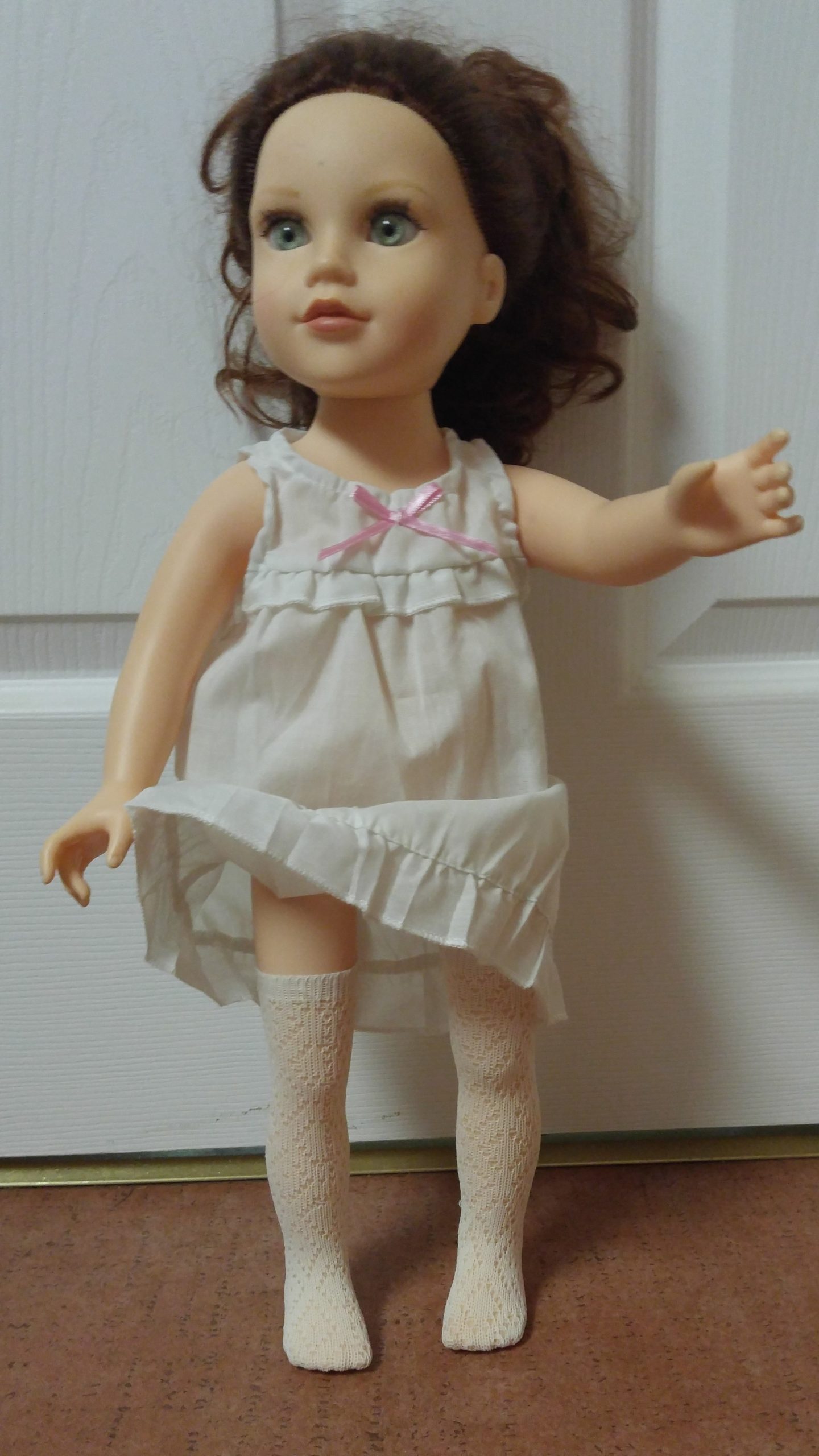
Pantalettes/Bloomers.

Chemise/Long Slip. Some women preferred the Camisole/Blouse-Like Top with their Pantalettes/Bloomers.
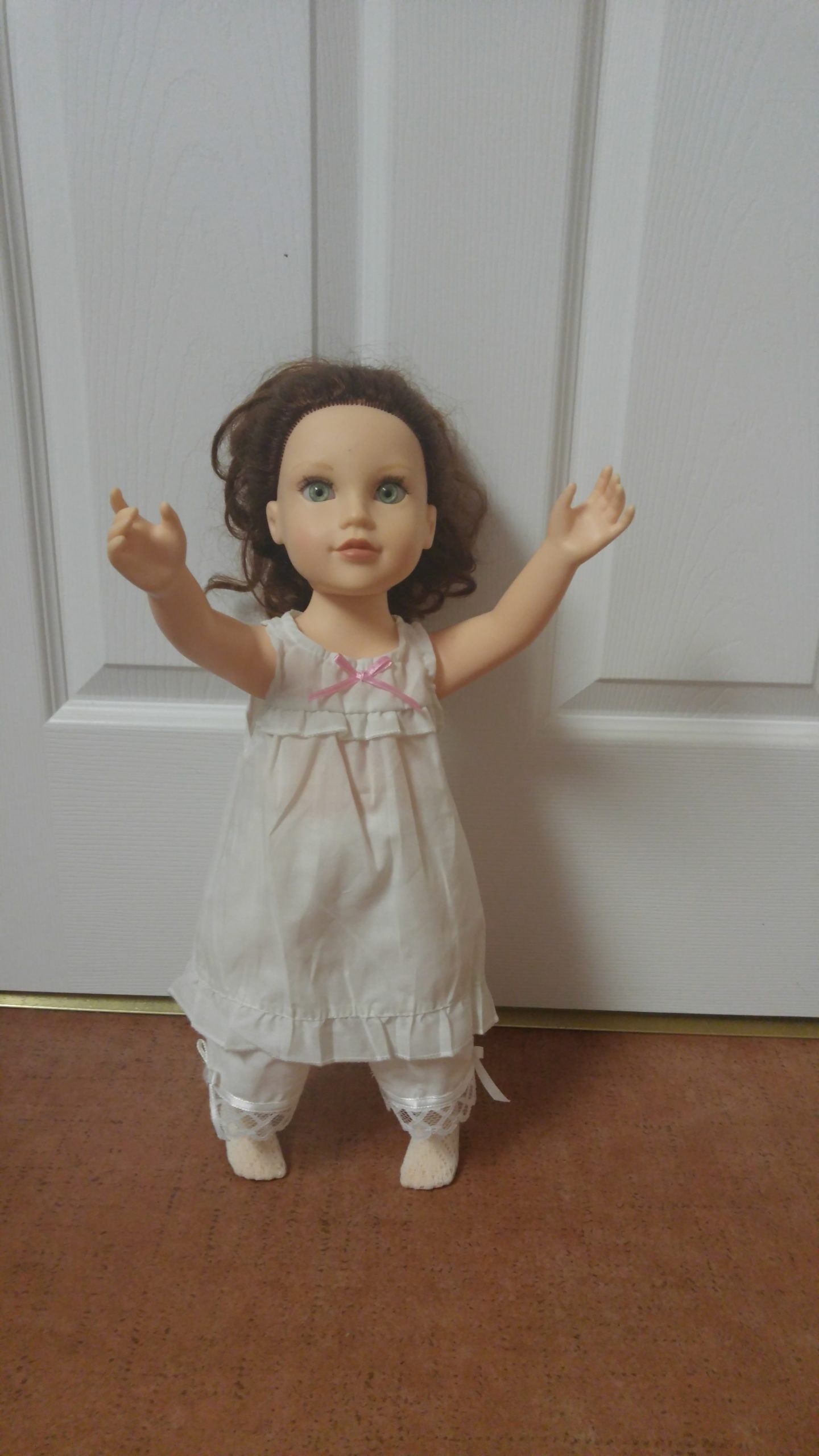
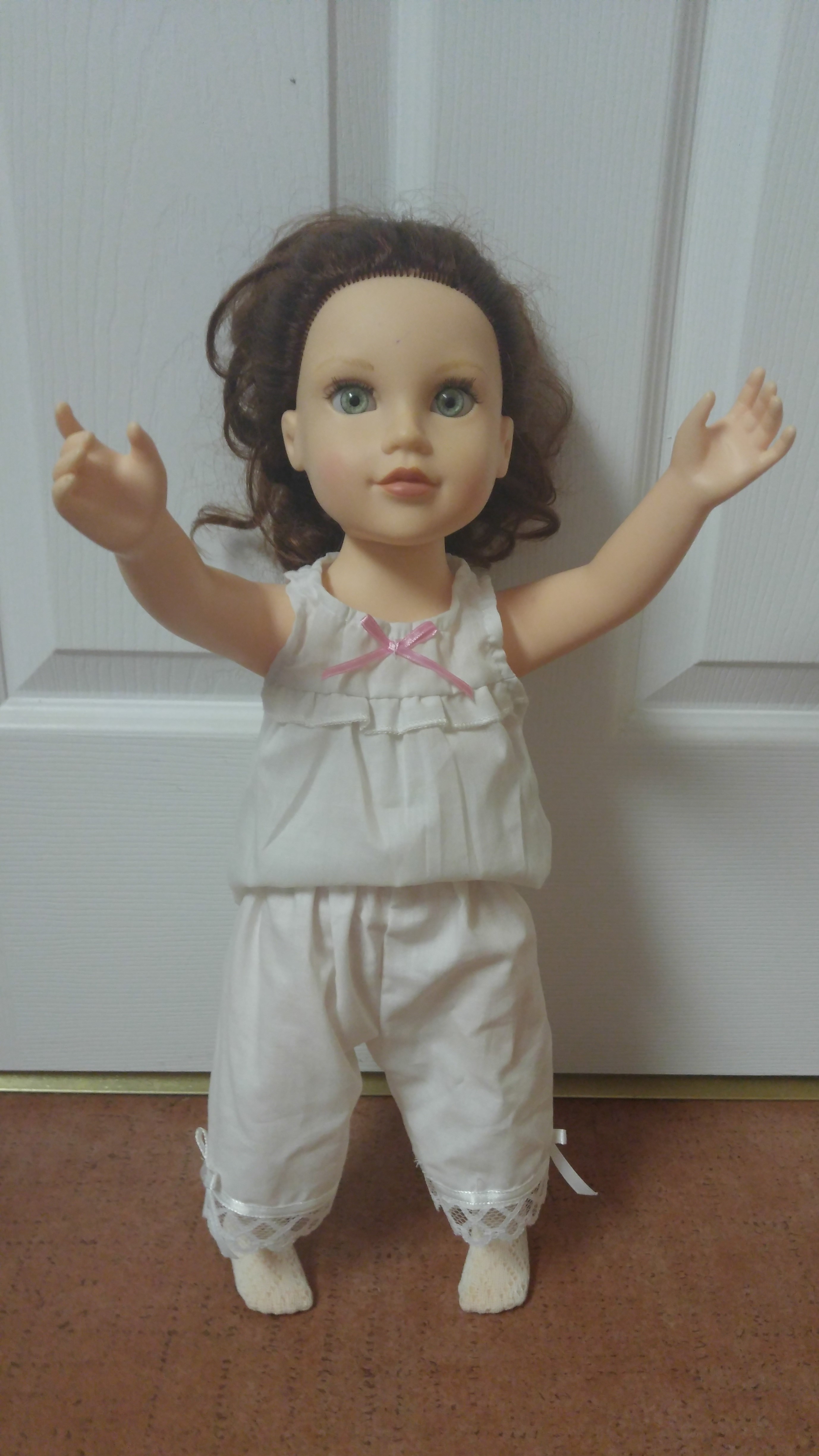
First Petticoat/Half-Slip.
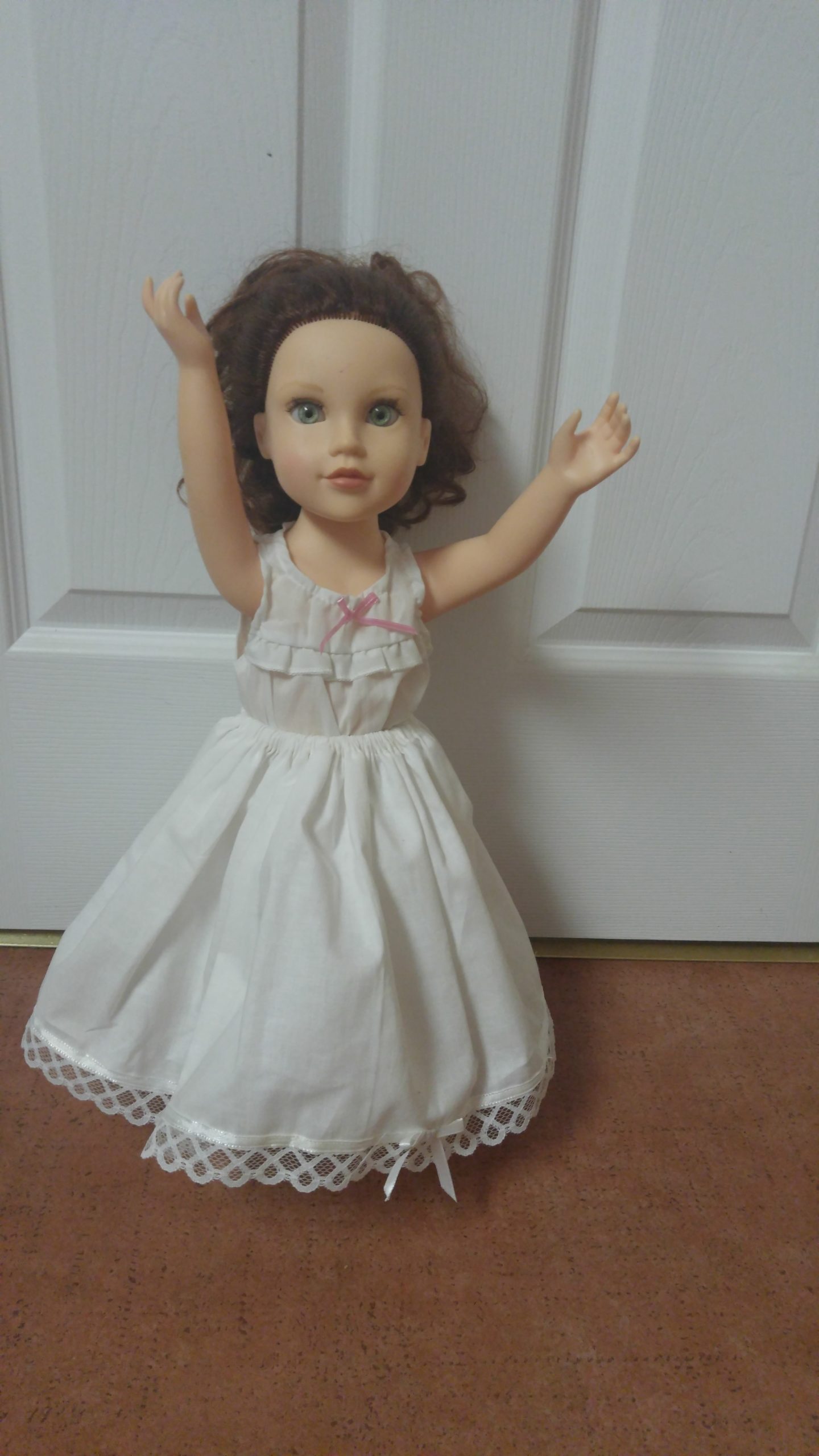
Crinoline/Hoopskirt, which replaced multiple layers of Starched Petticoats to maintain the bell-shaped fashion and make dressing cooler and less entangling around the feet. Pre-Crinoline, women might have worn ten or many more petticoats at once.
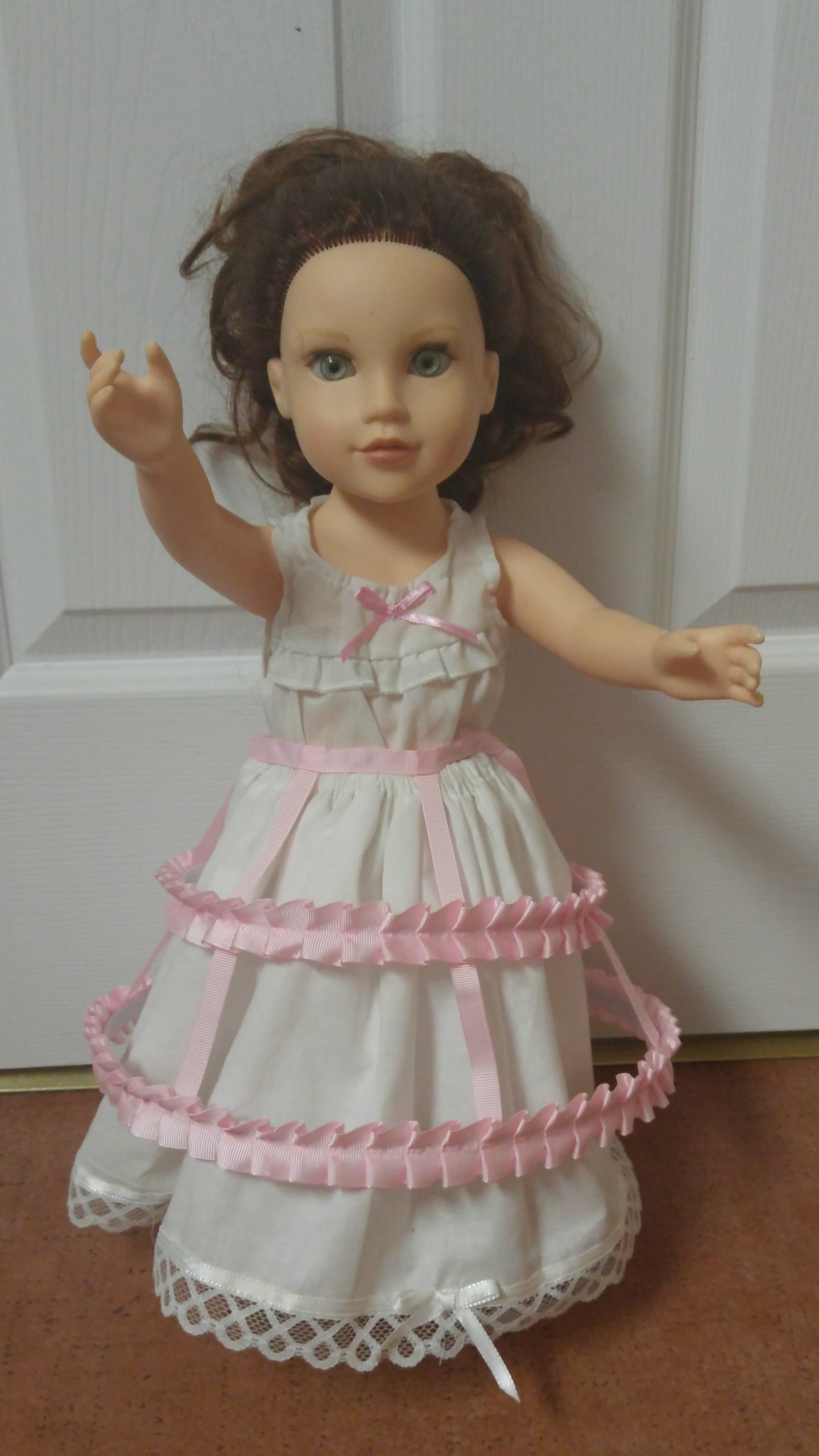
Second Petticoat/Half-Slip, which was worn over the Crinoline/Hoopskirt to keep the hoops—usually made of bone or some other abrasive material—from ripping the outer skirt.
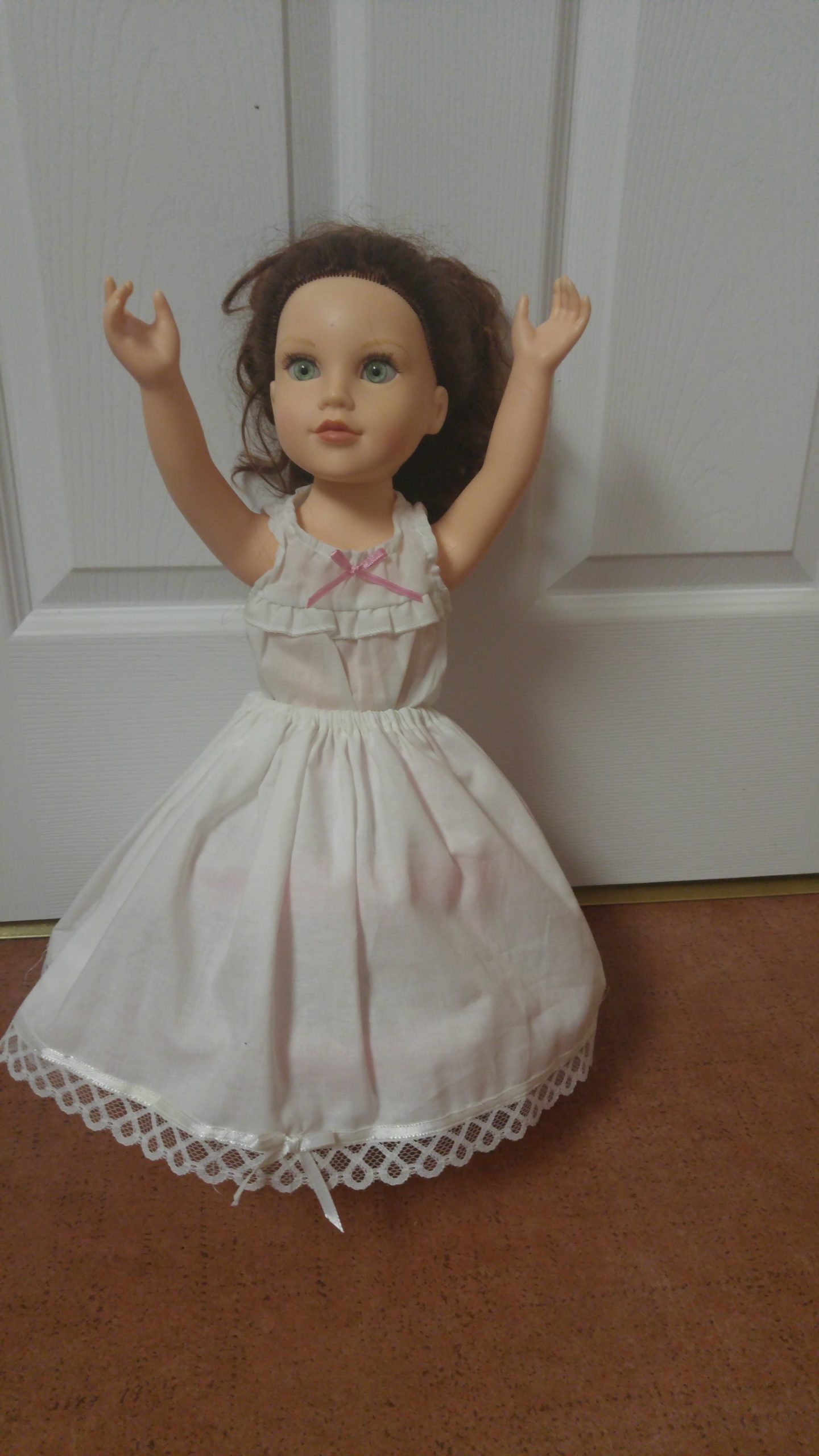
The Dreaded Corset, which was pulled tight for extra help in shaping; thus, the culprit behind many fainting spells when it hampered the lungs from breathing. The Corset shown here belongs more to the Revolutionary War period with its ties in the front. I couldn’t find a Civil War era one, which had the ties in back and hooks & eyes to button up the front.

The Outer Layers (Shown All Together):
Dress. As I mentioned in my previous post, my Jana doll is sporting a Garibaldi dress, which was fashionable during the Civil War. When wearing this military-style dress, some women added a red handkerchief around their neck to mimic the one worn by Union general George Armstrong Custer. Blouses and skirts were also popular during Civil War times.
Bonnet/Hat was properly worn in public, as well as Gloves (not shown here and either made of leather or lace or crocheted).
Belt (Optional Accessory).
Boots/Shoes. My Jana doll has on black, ankle-high, lace-up boots.
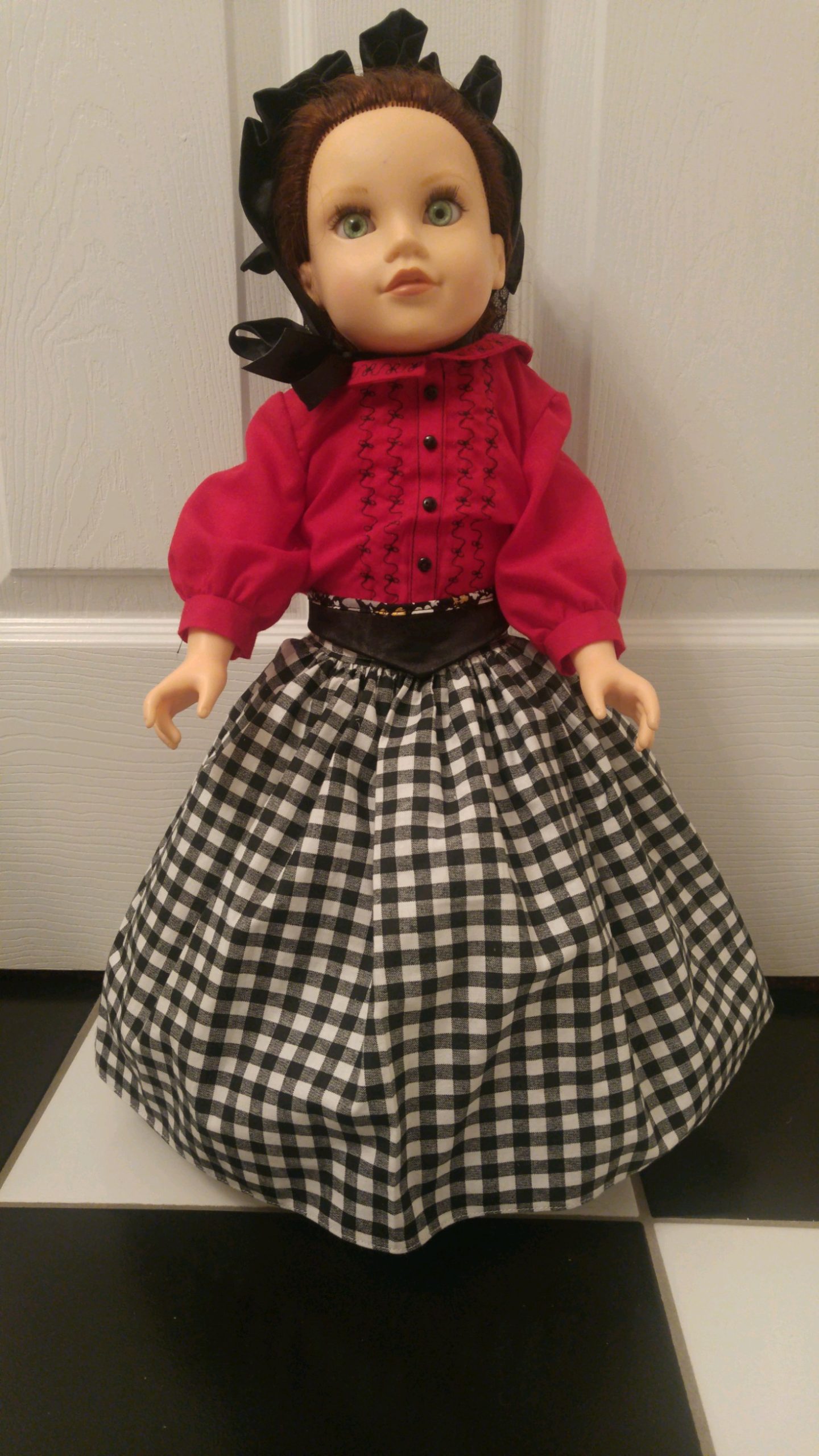
The Total Number of Layers, Including Under-and-Outer Garments = Eleven!
Thanks to all who participated in my challenge. I hope you have enjoyed this post and will stay tuned for the fifth installment of Pioneering Women of Civil War America, which will feature two very famous women together. Please, feel free to start again with these posts with the very first installment and introduction to Pioneering Women of Civil War America. If you missed my blog to learn why Amelia Bloomer’s name is forever linked to bloomers in the United States, you can find that here: Pioneering Women of Civil War America (Second Installment). And, if you want to learn even more about Amelia Bloomer, watch this video: https://civilwarwomen.co/2021/03/25/pioneering-women-of-the-civil-war-amelia-bloomer/.
Pingback: Pioneering Women of Civil War America (Fifth Installment) - Lisa Potocar ~ Author
I can’t tell you how much I appreciate the historical background and evolution of the corset, Sky! Your lesson is much appreciated–you must be a teacher!!! I might have to pick your brains some more about Civil-War era costumes. Happy sewing to you!
Great Post!
I do want to add I find it interesting how you talk about the “dreaded corset”. I used to think the same thing, but as I got into costume-making and wearing modern corsets for fun, I have found the ones I have worn gave great support, both for bosom, back, and posture. They can be a little hard to breathe in, yes, but not all of them. I think the main reason the corsets would be considered almost torturous is that they were either ill-fitting or they were used to gain that “wasp waist”, which became a big goal setter in the mid-late Victorian period.
Also, Jana’s (the doll’s) Revolution corset is closer to stays, which are A LOT easier to move in, and quite more comfortable to move around in, if I might add. For a short inquiry, stays kind of developed into a corset; the main reason they are called corsets themselves is that modern fashion has, in a sense, grouped these items together. According to the Dreamstress blog, stays were fully-boned bodices and the term was used from the late 16th century to the end of the 18th century; sometimes, they would be half-boned. But the main thing was they were meant to give support to a woman’s posture and virtue. Corsets, when they became more of fashion, had fewer bones, but were more structured; think of a birdcage. If you would like a better, detailed explanation about the differences between corsets and stays, I would recommend the two links I have provided at the bottom; the video link is from a dress historian (and if she looks familiar, that’s because she worked with American Dress Company and helped create patterns for historical costumes. She can be seen on some of the pattern packages modeling the completed pieces. I’m a big fan of hers).
https://thedreamstress.com/2013/08/terminology-whats-the-difference-between-stays-jumps-a-corsets/
https://www.youtube.com/watch?v=j8tRK3gn-NA